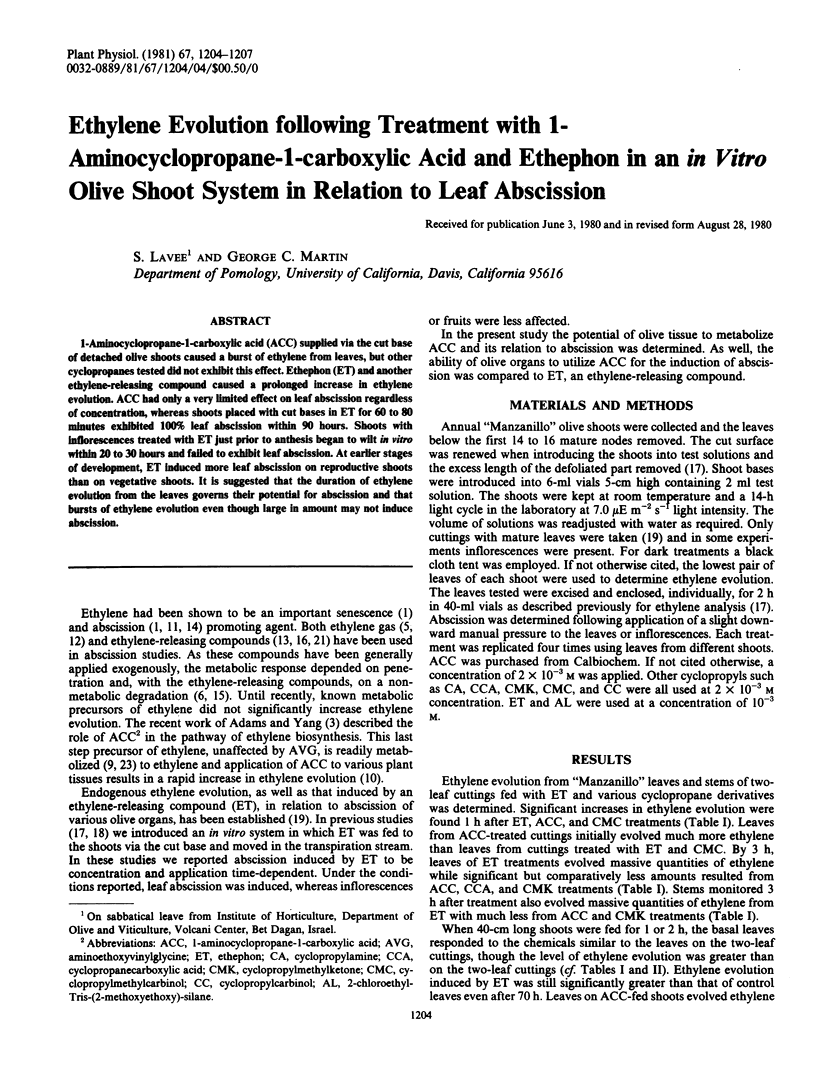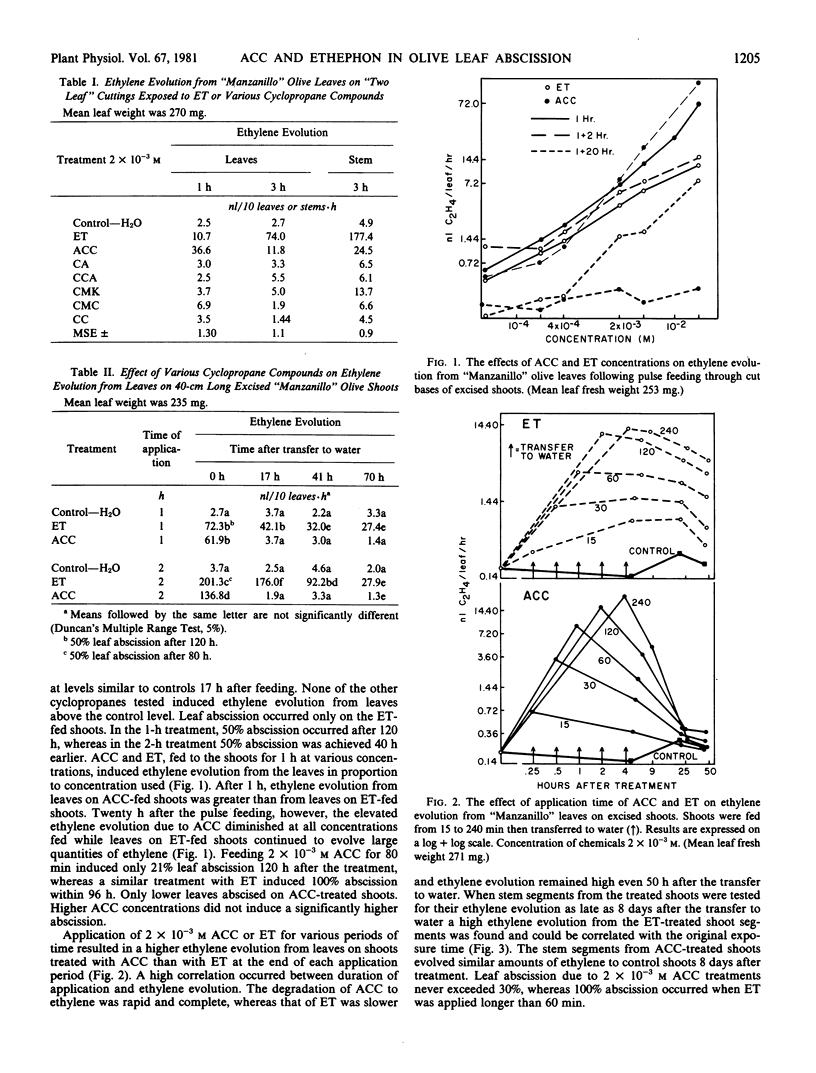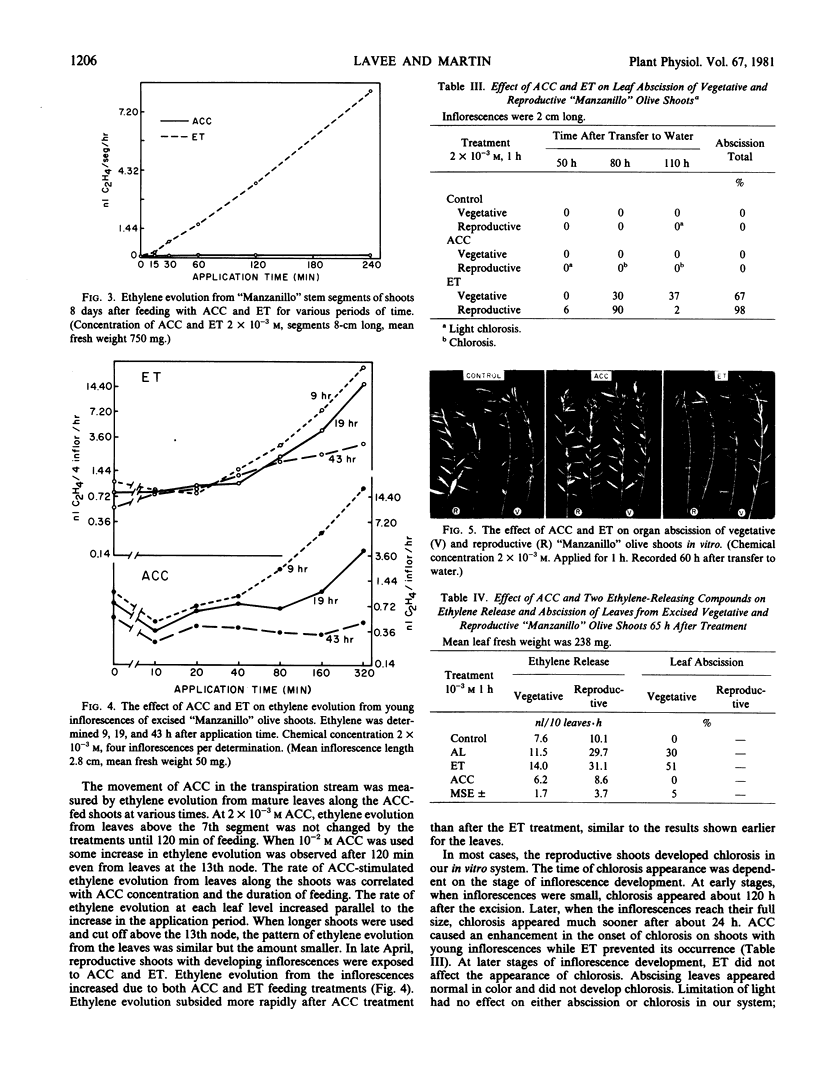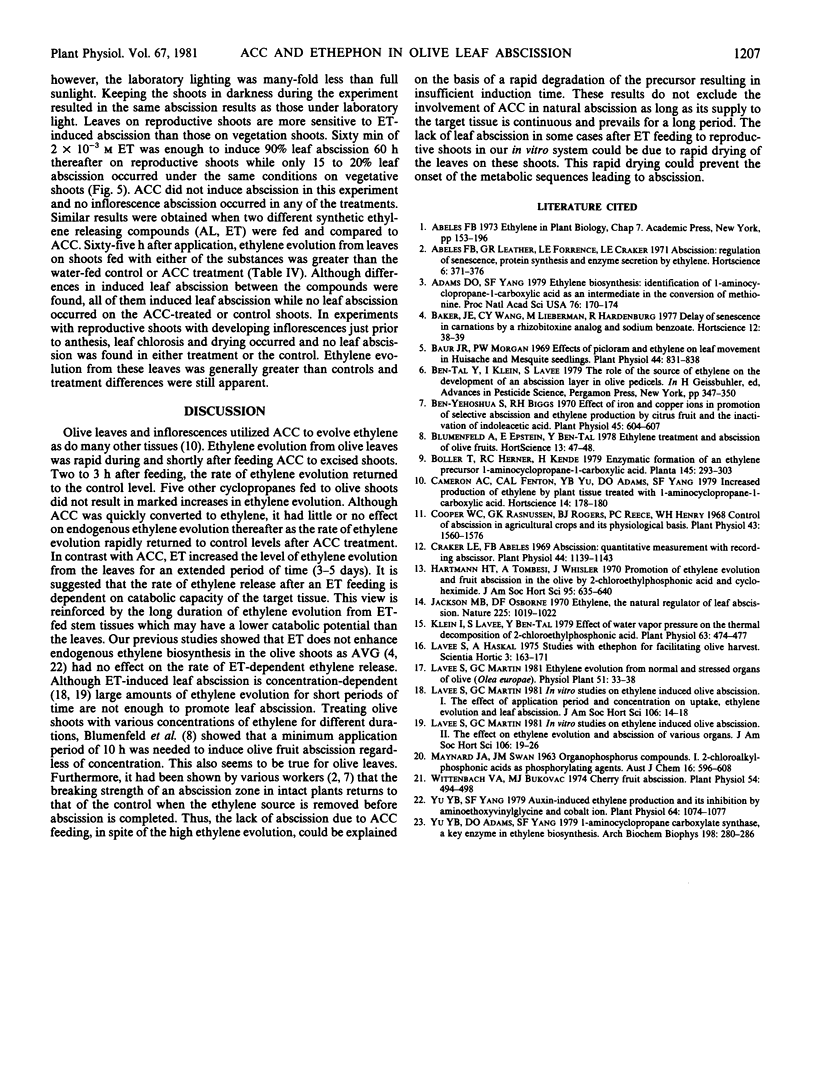Abstract
1-Aminocyclopropane-1-carboxylic acid (ACC) supplied via the cut base of detached olive shoots caused a burst of ethylene from leaves, but other cyclopropanes tested did not exhibit this effect. Ethephon (ET) and another ethylene-releasing compound caused a prolonged increase in ethylene evolution. ACC had only a very limited effect on leaf abscission regardless of concentration, whereas shoots placed with cut bases in ET for 60 to 80 minutes exhibited 100% leaf abscission within 90 hours. Shoots with inflorescences treated with ET just prior to anthesis began to wilt in vitro within 20 to 30 hours and failed to exhibit leaf abscission. At earlier stages of development, ET induced more leaf abscission on reproductive shoots than on vegetative shoots. It is suggested that the duration of ethylene evolution from the leaves governs their potential for abscission and that bursts of ethylene evolution even though large in amount may not induce abscission.
Full text
PDF



Images in this article
Selected References
These references are in PubMed. This may not be the complete list of references from this article.
- Adams D. O., Yang S. F. Ethylene biosynthesis: Identification of 1-aminocyclopropane-1-carboxylic acid as an intermediate in the conversion of methionine to ethylene. Proc Natl Acad Sci U S A. 1979 Jan;76(1):170–174. doi: 10.1073/pnas.76.1.170. [DOI] [PMC free article] [PubMed] [Google Scholar]
- Baur J. R., Morgan P. W. Effects of picloram and ethylene on leaf movement in huisache and mesquite seedlings. Plant Physiol. 1969 Jun;44(6):831–838. doi: 10.1104/pp.44.6.831. [DOI] [PMC free article] [PubMed] [Google Scholar]
- Ben-Yehoshua S., Biggs R. H. Effects of iron and copper ions in promotion of selective abscission and ethylene production by citrus fruit and the inactivation of indoleacetic Acid. Plant Physiol. 1970 May;45(5):604–607. doi: 10.1104/pp.45.5.604. [DOI] [PMC free article] [PubMed] [Google Scholar]
- Cooper W. C., Rasmussen G. K., Rogers B. J., Reece P. C., Henry W. H. Control of abscission in agricultural crops and its physiological basis. Plant Physiol. 1968 Sep;43(9 Pt B):1560–1576. [PMC free article] [PubMed] [Google Scholar]
- Craker L. E., Abeles F. B. Abscission: quantitative measurement with a recording abscissor. Plant Physiol. 1969 Aug;44(8):1139–1143. doi: 10.1104/pp.44.8.1139. [DOI] [PMC free article] [PubMed] [Google Scholar]
- Jackson M. B., Osborne D. J. Ethylene, the natural regulator of leaf abscission. Nature. 1970 Mar 14;225(5237):1019–1022. doi: 10.1038/2251019a0. [DOI] [PubMed] [Google Scholar]
- Klein I., Lavee S., Ben-Tal Y. Effect of water vapor pressure on the thermal decomposition of 2-chloroethylphosphonic Acid. Plant Physiol. 1979 Mar;63(3):474–477. doi: 10.1104/pp.63.3.474. [DOI] [PMC free article] [PubMed] [Google Scholar]
- Wittenbach V. A., Bukovac M. J. Cherry fruit abscission: evidence for time of initiation and the involvement of ethylene. Plant Physiol. 1974 Oct;54(4):494–498. doi: 10.1104/pp.54.4.494. [DOI] [PMC free article] [PubMed] [Google Scholar]
- Yu Y. B., Adams D. O., Yang S. F. 1-Aminocyclopropanecarboxylate synthase, a key enzyme in ethylene biosynthesis. Arch Biochem Biophys. 1979 Nov;198(1):280–286. doi: 10.1016/0003-9861(79)90420-x. [DOI] [PubMed] [Google Scholar]
- Yu Y. B., Yang S. F. Auxin-induced Ethylene Production and Its Inhibition by Aminoethyoxyvinylglycine and Cobalt Ion. Plant Physiol. 1979 Dec;64(6):1074–1077. doi: 10.1104/pp.64.6.1074. [DOI] [PMC free article] [PubMed] [Google Scholar]



